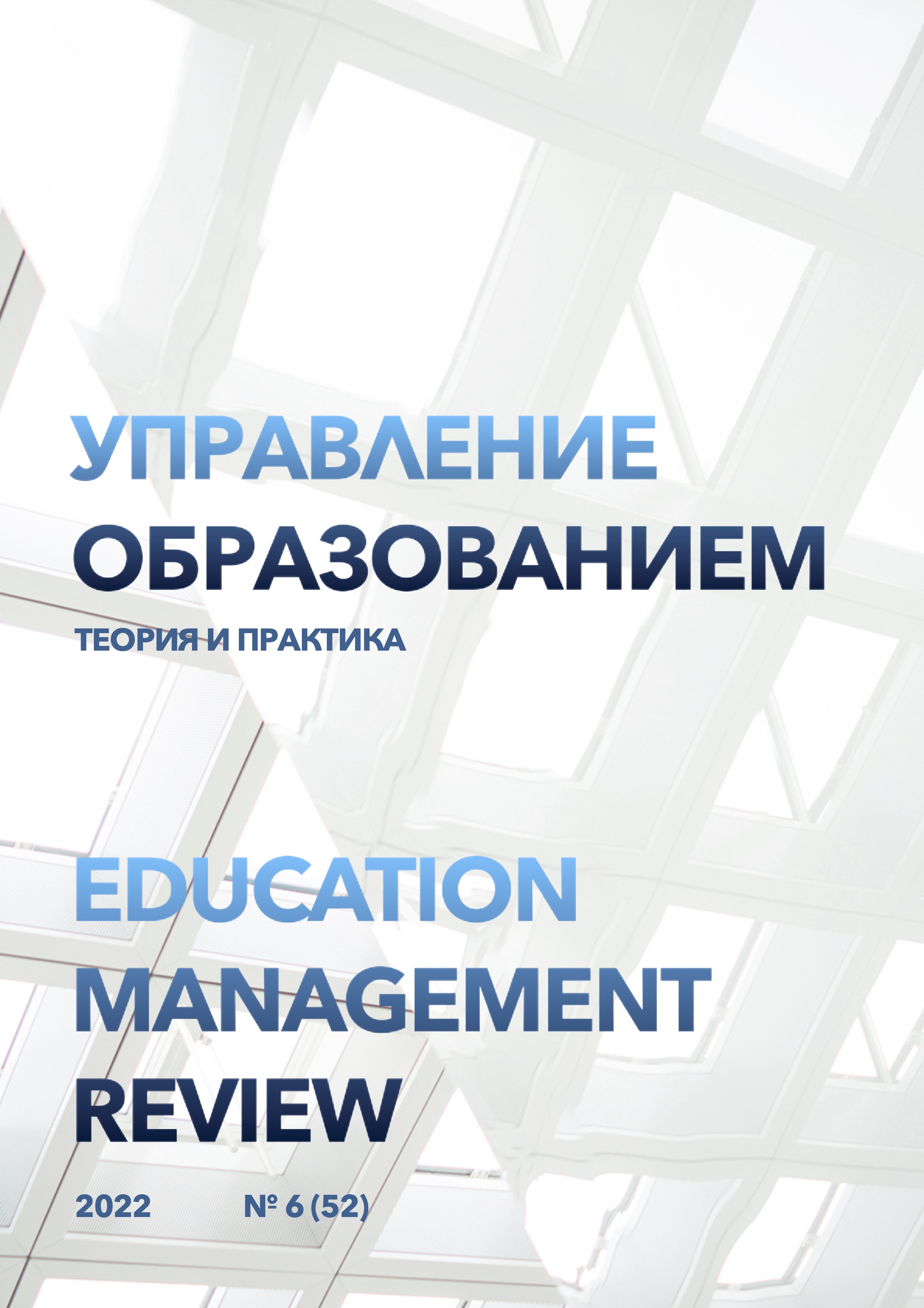Особенности управления конкуренцией в конкурентной среде российской системы высшего образования
DOI:
https://doi.org/10.25726/e9640-9985-8032-cКлючевые слова:
Управление, конкуренция, образование, средаАннотация
В состоянии рыночной экономики находятся не только рынок товаров, но и услуг. В частности, это касается сферы образовательных услуг, где конкурируют между собой все участники образовательного процесса на разных уровнях. Как и на каждом рынке, характерным элементом является состояние конкуренции, которая выделяет более или менее конкурентоспособные предложения для потребителя. Характеризуется конкурентоспособность как экономическая категория, которая позволяет в условиях конкуренции представить на внутренний и внешний рынок продукцию, которая с точки зрения конкурентных преимуществ воспринимается потребителем как лучше аналогичной продукции конкурентов и позволяет предприятию получать плановый доход, реализовывать стратегии конкурентной борьбы и обеспечивать выживание и желаемое положение на рынке в долгосрочной перспективе. Научная новизна определяется тем, что исследована конкурентная среда системы высшего образования, со всеми агентами и влияющими организациями. Методологическая специфика системного подхода заключается в том, что целью исследования является изучение закономерностей и механизмов образования сложного объекта из определенных составляющих. При этом особое внимание обращается на многообразие внутренних и внешних связей системы, на процесс (процедуру) объединение основных понятий в единую теоретическую картину, что дает возможность выявить сущность целостности системы. Практическая значимость исследования определяется тем, результаты исследования можно применять при создании стратегии продвижения высшего учебного заведения с учетом уровня конкуренции.
Библиографические ссылки
Băcilă, M.-F., Pop, M. C., Scridon, M. A., & Ciornea, R. (2014). Development of an instrument for measuring student satisfaction in business educational institutions. Amfiteatru Economic, 16(37), 841–856.
Gomes, R., & Ribeiro, J. (2009). The main benefits of COBIT in a high public educational institution - A case study. In PACIS 2009 - 13th Pacific Asia Conference on Information Systems: IT Services in a Global Environment.
Harrell, S. L., Nam, H. A., Vergara Larrea, V. G., Keville, K., & Kamalic, D. (2015). Student cluster competition: A multi-disciplinary undergraduate HPC educational tool. In Proceedings of EduHPC 2015: Workshop on Education for High-Performance Computing - Held in conjunction with SC 2015: The International Conference for High Performance Computing, Networking, Storage and Analysis. https://doi.org/10.1145/2831425.2831428
Ivinskaya, E. Y., Nikitin, A. A., Markovichev, A. S., Sinenko, V. Y., Mavrina, I. A., Zhafyarov, A. Z., … Zhukov, G. N. (2016). Development of competitive relations in the russian market of educational services. International Review of Management and Marketing, 6(1), 65–69.
Jacoby, G., & Keville, K. (2011). To support and defend: A spirited engineering competition. IEEE Pervasive Computing, 10(3), 84–88. https://doi.org/10.1109/MPRV.2011.58
Joyce, A., Day, S., & Evans, N. (2018). Educational competitions to boost the cyber workforcedevelopment. In Proceedings - 2018 National Cyber Summit Research Track, NCS 2018 (pp. 34–37). https://doi.org/10.1109/NCS.2018.00010
Kataeva, N., Berezina, E., Sysolyatin, A., Meshcheryakova, T., Zurakhovskaya, I., & Sholotonova, E. (2017). A proposed assessment method for image of regional educational institutions. In MATEC Web of Conferences (Vol. 106). https://doi.org/10.1051/matecconf/201710608078
Kesim, E. (2015). The importance of distance education experts in the organizational development process of distance education institutions: A theoretical evaluation. Identification, Evaluation, and Perceptions of Distance Education Experts. https://doi.org/10.4018/978-1-4666-8119-4.ch006
Kozlova, L. P., & Kozlova, O. A. (2019). The Role of Strategic Educational Partnerships. In Proceedings of 2018 17th Russian Scientific and Practical Conference on Planning and Teaching Engineering Staff for the Industrial and Economic Complex of the Region, PTES 2018 (pp. 136–137). https://doi.org/10.1109/PTES.2018.8604242
Pal Pandi, A., Paranitharan, K. P., & Jeyathilagar, D. (2018). Implementation of IEQMS model in engineering educational institutions – a structural equation modelling approach. Total Quality Management and Business Excellence, 29(1–2), 29–57. https://doi.org/10.1080/14783363.2016.1154431
Pykhtin, A. I., Germanovich, A. V, & Sergeevich, K. D. (2019). Development of a unified digital information and communication system for admission and enrollment to higher educational institutions. In SIBIRCON 2019 - International Multi-Conference on Engineering, Computer and Information Sciences, Proceedings (pp. 114–119). https://doi.org/10.1109/SIBIRCON48586.2019.8958316
Pykhtin, A., & Ovchinkin, O. (2018). Mathematical model and algorithm of carrying out the centralized competition in Russian higher educational institutions. In International Multidisciplinary Scientific GeoConference Surveying Geology and Mining Ecology Management, SGEM (Vol. 18, pp. 537–543). https://doi.org/10.5593/sgem2018/2.1/S07.068
Reyad, S., Madbouly, A., Gupta, V., Badawi, S., & Al Abbas, A. (2020). Knowledge management in higher educational institutions of oman: Determinants of performance. In Proceedings of the International Conference on Intellectual Capital, Knowledge Management and Organisational Learning, ICICKM (Vol. 2020- October, pp. 324–331). https://doi.org/10.34190/IKM.20.043
Ryzhkov, A. S. (2017). Development of project management methodology to provide educational services for global market. In Proceedings of the 12th International Scientific and Technical Conference on Computer Sciences and Information Technologies, CSIT 2017 (Vol. 1, pp. 1–6). https://doi.org/10.1109/STC-CSIT.2017.8098723
Sandru, O. I., & Sandru, I. M. D. (2009). Managing competition between universities by increasing the quality of the educational process. In Annals of DAAAM and Proceedings of the InternationalDAAAM Symposium (pp. 1555–1556).
Shanthi, S., & Ravichandran, V. C. (2006). Architecture for effective knowledge creation in educational institutions and dissemination through satellite technology - An Indian experience. In Proceedings of the European Conference on Knowledge Management, ECKM (pp. 484–494).
Suray, N., Karpenko, E., Dubovik, M., Shlyenov, Y., & Sterlikov, F. (2019). Risk management at educational institution. Entrepreneurship and Sustainability Issues, 7(2), 1171 1184. https://doi.org/10.9770/jesi.2019.7.1(26)
Tang, X. (2013). Study of educational products in the marketing channels during upgrading process. Lecture Notes in Electrical Engineering, 223 LNEE(VOL. 1), 561–566. https://doi.org/10.1007/978-3-642-35419-9_65
Van Nuland, S. E., Roach, V. A., Wilson, T. D., & Belliveau, D. J. (2015). Head to head: The role of academic competition in undergraduate anatomical education. Anatomical Sciences Education, 8(5), 404–412. https://doi.org/10.1002/ase.1498
Volk, M., & Jamous, N. (2018). IT-landscape management in the higher educational institutions. In Proceedings - 2018 6th International Conference on Enterprise Systems, ES 2018 (pp. 211–216). https://doi.org/10.1109/ES.2018.00039




